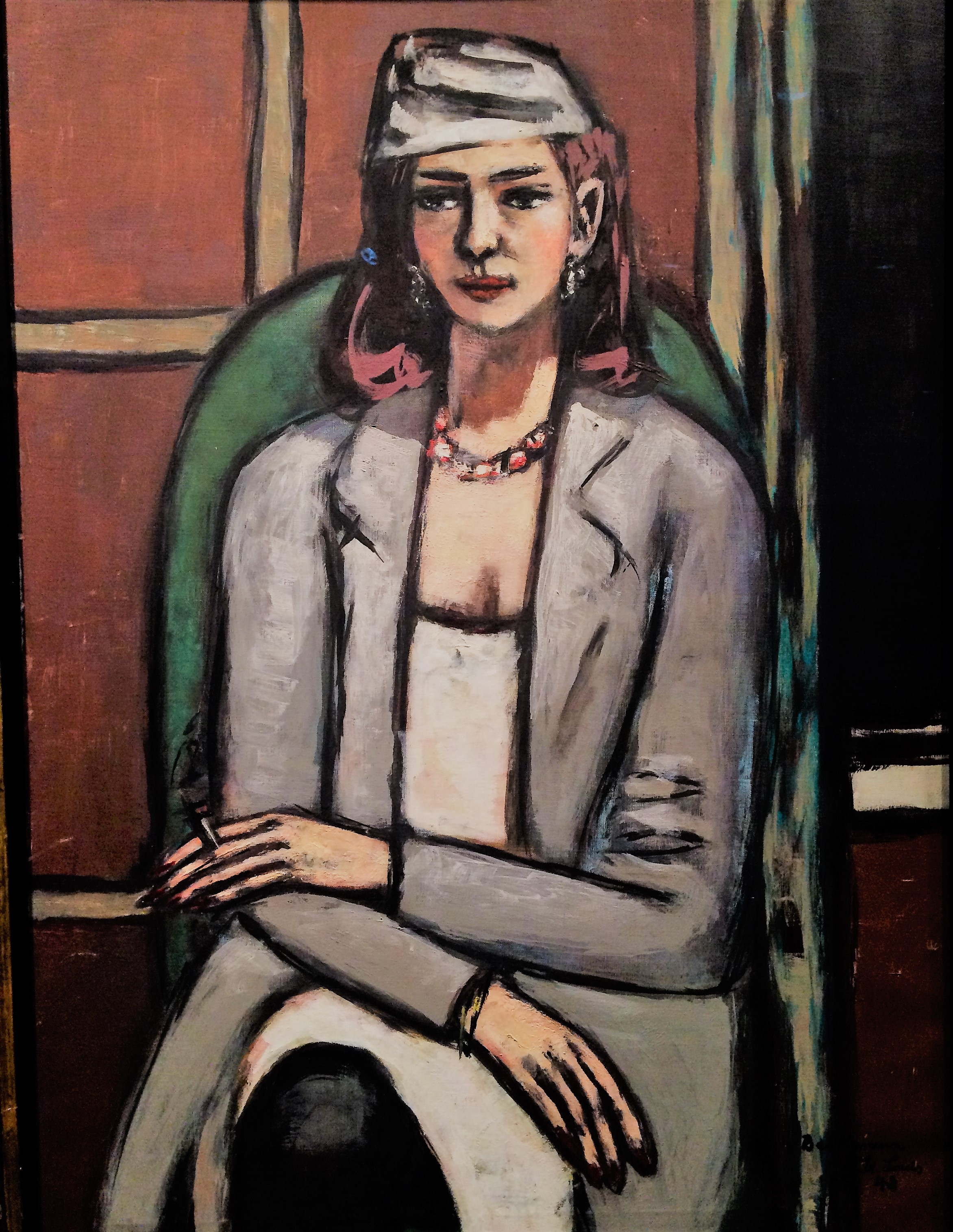Max Beckmann in New York
1884 -1950
Painter, Printmaker, Sculptor and Writer
Bonjour mes amis!
The current exhibit at the Metropolitan Museum of Art, 'Max Beckmann in New York,' was a breath of fresh air, as well as a chance to revisit an old friend. The focus is on the 25 paintings he did between 1920-1948 that would eventually enter New York collections and on the 4 other paintings he did during the 16 months that he and his wife lived in New York (1949-1950).
The Old Actress
One of the works in the exhibition, The Old Actress (1926), had been purchased by Abby Aldrich Rockefeller, a founder of the Museum of Modern Art, in 1930. This was the second work by Beckmann to enter a private collection in New York.
In this painting it has been suggested that Beckmann most likely knew his refined subject, as he often painted portraits of friends and neighbors. In this work, the self-possession of the elderly actress comes shining through, as do the simplified forms and the artist's bold brushstrokes and colors.
Unfortunately, the stature and accolades that Max Beckmann (1884 -1950) had enjoyed as a young painter, sculptor, and teacher in Germany, would come to a grinding halt with the rise of National Socialism in the '30s. Adolf Hitler, who had once hoped for admission to the art academy in Vienna, disliked modern art and ordered its suppression. Taking to the airwaves, he labeled it ‘degenerate art' and confiscated hundreds of works by Beckmann and others that had hung in German museums.
The day after Hitler's address to the nation on 'degenerate art,' Beckmann and his second wife Quappi moved to Amsterdam where, in October 1937, he painted ‘Quappi with White Fur,' where we see her standing in a hotel lobby elegantly turned out. Perhaps the stylish Quappi symbolizes the lifestyle they had left behind, as the years aheda would not be as easy or as joyful.
Quappi in White Fur
Quappi In Grey
Their plan was to stay for a year or two in Amsterdam before moving to Paris, where Beckmann had an apartment. But when World War ll broke out in 1939 and German troops occupied the Netherlands, Max and Quappi were unable to leave. For everyone life during the occupation was difficult, with many of the restaurants, dance halls and clubs closing. Beckmann, remembering the good times, chose to bring them to life in the many paintings he did of hotel lobbies and restaurants.
Given the limited focus of the exhibit, it was not surprising that a number of favorite paintings by Beckmann were missing—particularly the commanding ‘Self-Portrait in Tuxedo”—but then again, there were so many other wondrous paintings that I'd never seen before that any sense of loss was quickly forgotten.
After the war, Beckmann would turn down offers to teach in Germany and accept a full-time teaching position in St Louis. Two years later, in 1949, he and Quappi would finally settle in New York. For him it was a homecoming, of sorts, one that he felt marked the end of his exile. New York he said was 'a prewar Berlin multiplied a hundredfold.'
They were happy in New York, but that happiness would be cut short in October 1950 when Beckmann, on his way to the Metropolitan Museum of Art to see the recently-hung Self-Portrait in Blue Jacket (1950), suffered a fatal heart attack at the corner of Central Park West and 69th Street. His untimely death served as an inspiration for the exhibit that will remain on view until February 20th, 2017. It's a show you don't want to miss.
Each time I think of Beckmann's unused apartment in Paris, I find myself wondering where he would have lived had it not been for the German occupation in the Netherlands. My neighborhood of choice in Paris changes from year to year. If one year it's the très chic seizième, the next it's the trendy dixième, the avant-garde inhabitants living in apartments strung out along the Canal St. Martin. What's true of New York is also true of Paris—there's so much to enjoy! Have you a favorite part of Paris, an arrondissement in which you might like to live, given the chance? Or, for that matter, where would you choose to live in New York?
That's all for today, mesdames et monsieurs. Hope to see you next week when I'll have the coffee brewing. With the lighting of the tree at Rockefeller Center this week, the holiday season is officially upon us here in the Big Apple, so make time in your life for joy! What better gift to yourself than an hour spent with Beckmann and Quappi at the Met?
And if you have you a friend who loves beautiful things, museums and art, take that kindred soul along or, at the very least, share this post with them... Merci beaucoup! À plus tard...







